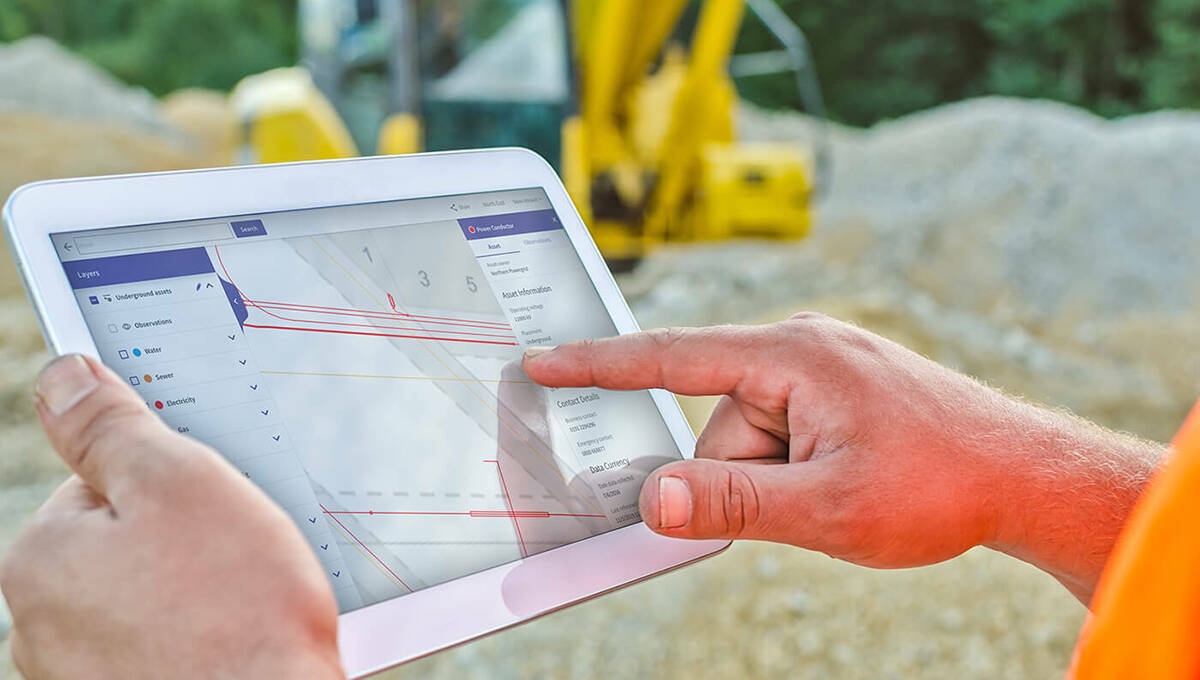In an online conference watched by 1,023 attendees, GeoPlace announced the winners of its 2022 Exemplar Awards.
The Exemplar Award for 2022 was won by Conwy County Borough Council for its work on identifying and remediating Ash Die Back (ADB). ADB is a life-threatening tree disease that’s spreading rapidly across the UK. Affected trees fall onto schools and highways and the like with little or no warning. An initial survey of Conwy’s highway network identified 4,799 trees with ADB, with a cost analysis evidencing £1.6 million in felling costs.
Through innovative spatial analysis, underpinned by its Local Street Gazetteer, Conwy developed a risk-based method for managing ADB. This enabled the council to prioritise trees by condition, height and hierarchy; to identify risks to public safety and to identify and mitigate the impact upon biodiversity. 875 trees were classified as dangerous and those in the ‘high risk’ category have been or are scheduled for removal shortly.
Oxfordshire County Council was announced as the Exemplar Award runner-up for its work, using the Unique Street Reference Number (USRN) to bring multiple systems and database together and provide a single view of the highways network. Data was stored held in hundreds of spreadsheets; emails, paper maps, and records; bespoke databases, contractor systems and shared network drives. There was no consistent approach to using, retrieving, updating, or interpreting the data, which meant it was impossible to get a single authoritative view of what teams were doing. Data wasn’t updated. There was no single point where data could be accessed. However, by using USRNs to integrate systems and databases, the council now has a single version of the truth for its highways network and service delivery.
Durham County Council was highly commended for making improvements to its Local Street Gazetteer, which makes it easier to coordinate streetworks. With an increase in requests after the introduction of the Streetworks permit scheme – particularly for rural broadband in environmentally sensitive areas – the Durham Streetworks team saw an increased demand on their time.
Before granting a permit, several different datasets need to be checked. These included Public Rights of Way (PROW), Sites of Special Scientific Interest (SSSI), Areas of Outstanding Natural Beauty (AONB); bus lanes, parking bays, market locations and days; primary gritting routes; pedestrian crossings and school crossing patrols; shrinkable clay areas; and height, weight and width restrictions. USRNs in the Local Street Gazetteer link all of these datasets together, giving a consistent view of the network. This enables decision making on permits to be made much faster, and authoritatively, leading to better outcomes for the travelling public and better partnerships with the utility companies who dig up the streets to provide gas, electricity, water and broadband to residents and businesses.
The London Borough of Hackney and London Borough of Hammersmith & Fulham won the Improvement Awards for Addresses and Improvement Award for Streets respectively. Both authorities made significant improvements to their data over the past year and raise the quality of their data.
Nick Chapallaz, Managing Director of GeoPlace said: “Every year, it gives us immense pleasure to highlight the outstanding work done by Street and Address Custodians. I would like to congratulate Conwy, Oxfordshire and Durham for their innovative use of their Local Street Gazetteers. Service provision is complex. Many different datasets and records need to be checked before making decisions that can impact the highway. By using USRNs to bring multiple systems and databases together, all three authorities can now be sure their decision-making is based on accurate, joined-up data which results in better services for residents and businesses.
View the Award Winners page here, including the Data Quality and Improvement Awards 2022.
Notes:
GeoPlace’s Exemplar Awards
The Awards highlight Custodians' roles within their authorities and enable their work to be more widely promoted to all parts of the authority. They allow the many services that use address and street data to see the high standard of the data is externally recognised. From radical transformation initiatives saving millions of pounds for local authorities, to smaller projects improving data management by using the local address and street gazetteers in innovative ways, almost every aspect of local government business is underpinned by high quality address and street data.
GeoPlace's awards highlight the Street and Addressing Custodians' work helping to curate and maintain that data. Promoting their work helps to highlight the importance of their role, and the potential for this data to deliver ever-more efficient and effective services for their communities.
About GeoPlace
GeoPlace LLP is a public sector limited liability partnership between the Local Government Association (LGA) and Ordnance Survey.
GeoPlace is a world class expert in address and street information management, working internationally as well as in the UK to help our partners and customers maximise the value of their spatial information for better decision making.
GeoPlace maintains a national infrastructure that supports the address and street information needs of the public and private sectors. Its work relies heavily on close working relationships with every local authority in England and Wales. This relationship has been developed over 15 years, to build the National Address Gazetteer infrastructure and National Street Gazetteer. Ordnance Survey develops the range of AddressBase products from the National Address Gazetteer and OS MasterMap Highways Network from the NSG. Both datasets underpin efficient and effective services, bringing direct service delivery benefits to users.
The Unique Property Reference Number (UPRN) and the Unique Street Reference Number (USRN) are the unique identifiers for every addressable location and street in Great Britain. They are created by local authorities who have the statutory authority to name and number every street and property and Ordnance Survey who identify objects on the landscape which may otherwise not attract an address.
These unique reference numbers link datasets together and share information with other organisations who also use them. They provide a comprehensive, complete and consistent identifier throughout a property's life cycle â from planning permission or street naming through to demolition.



